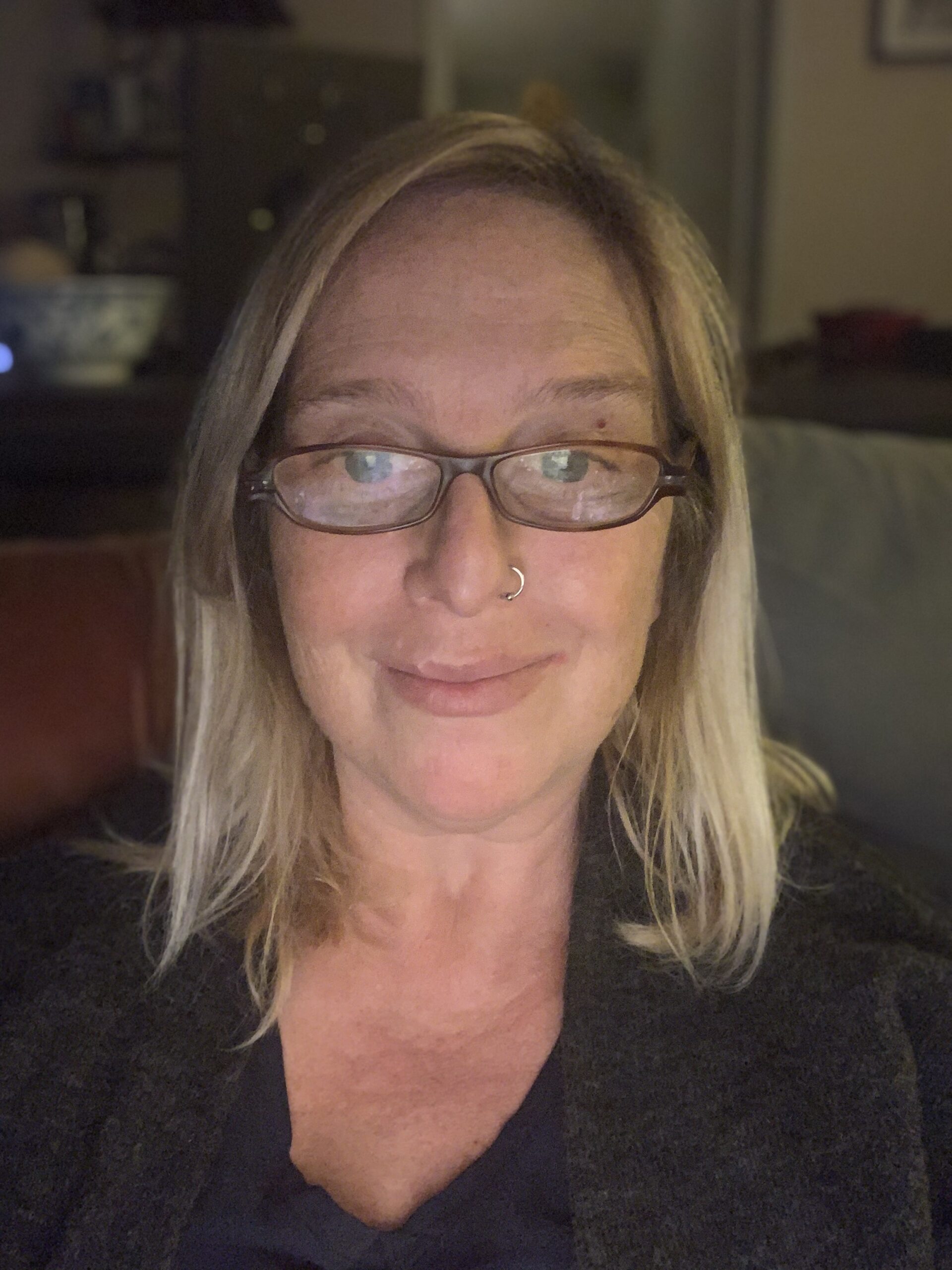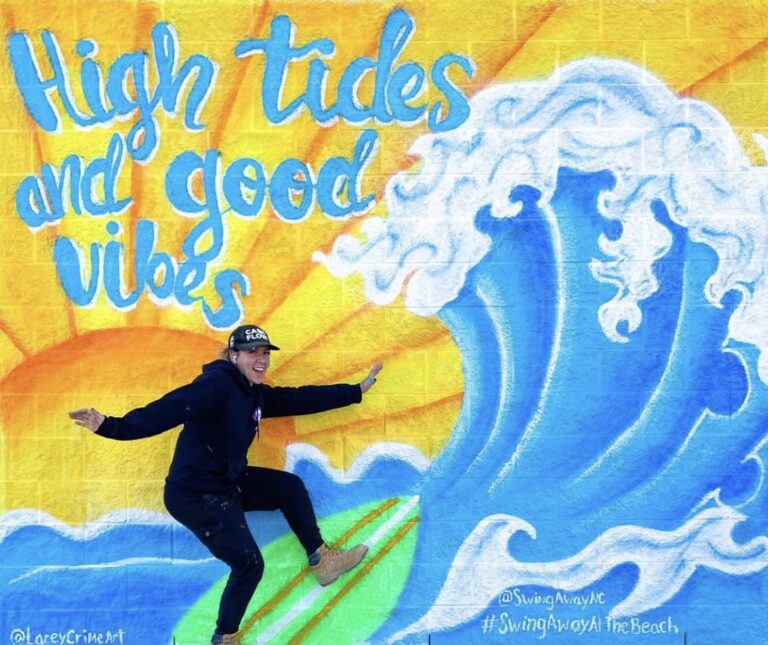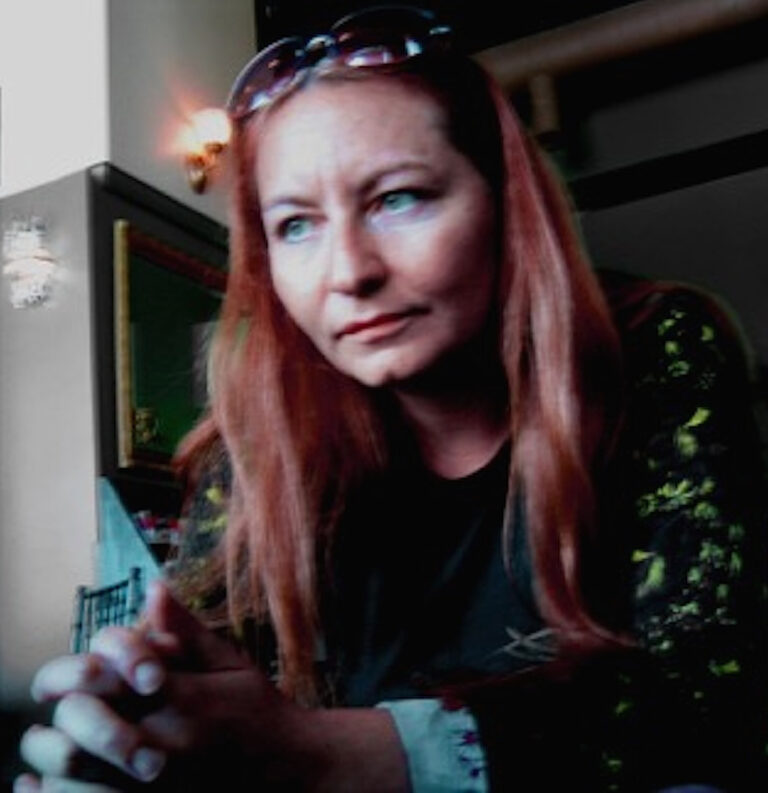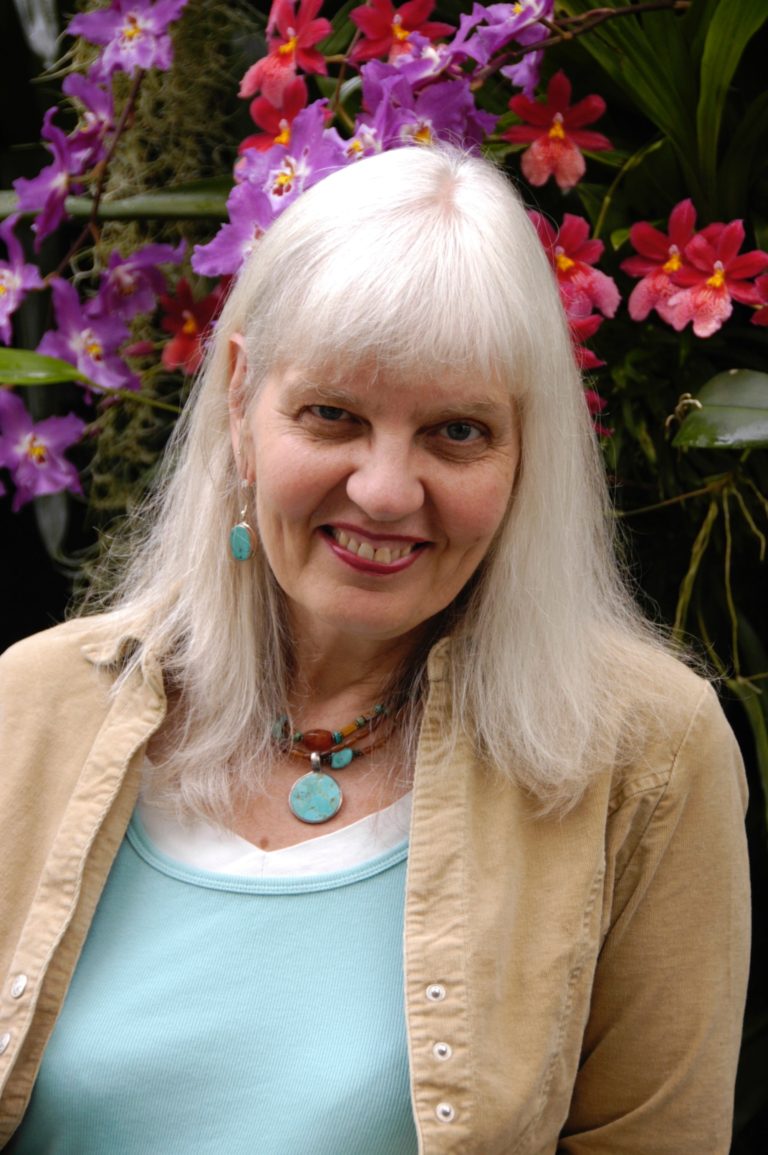Artist Margaux Jones creates tarot card and oracle decks under the name MJ Cullinane. Using digital collage to create her cards, she adds as many as 100 layers to her artwork. She also creates the stories behind the cards and the companion books for the decks. This includes a lot of research and a lot of writing before she even starts the artwork. Her first deck was a Crow Tarot Deck, and her latest is an oracle deck called Roar that provides guidance from 54 women in history.
Listen here or download from iTunes, Spotify, Google Play, CastBox, or Stitcher.
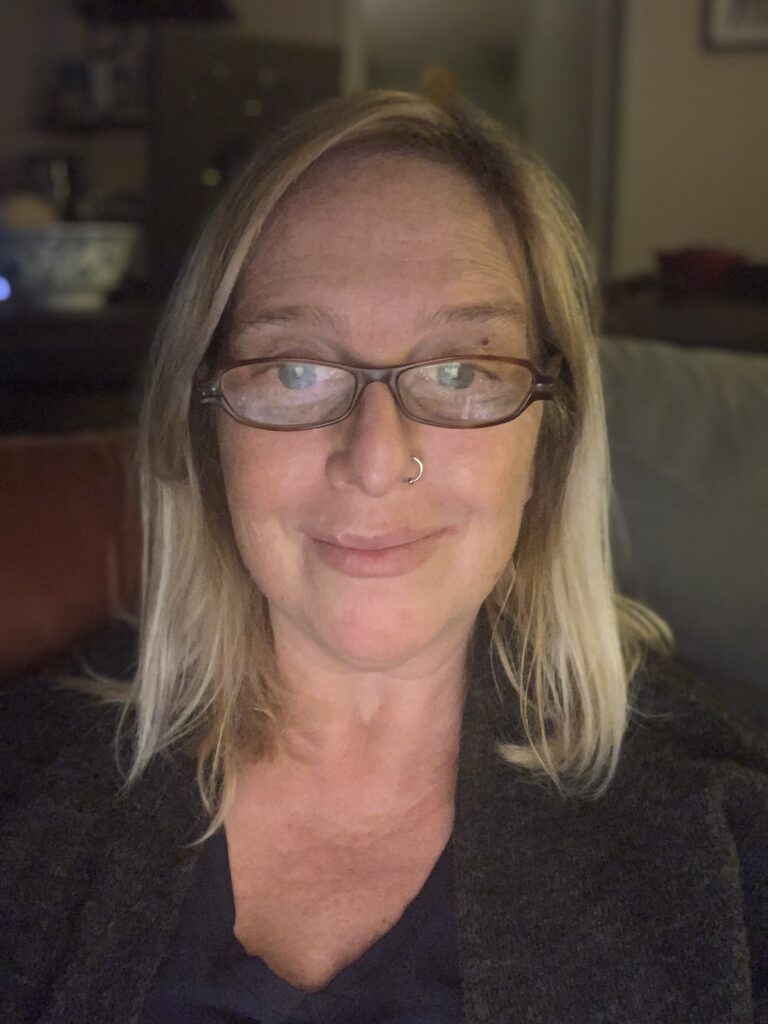
Margaux Jones
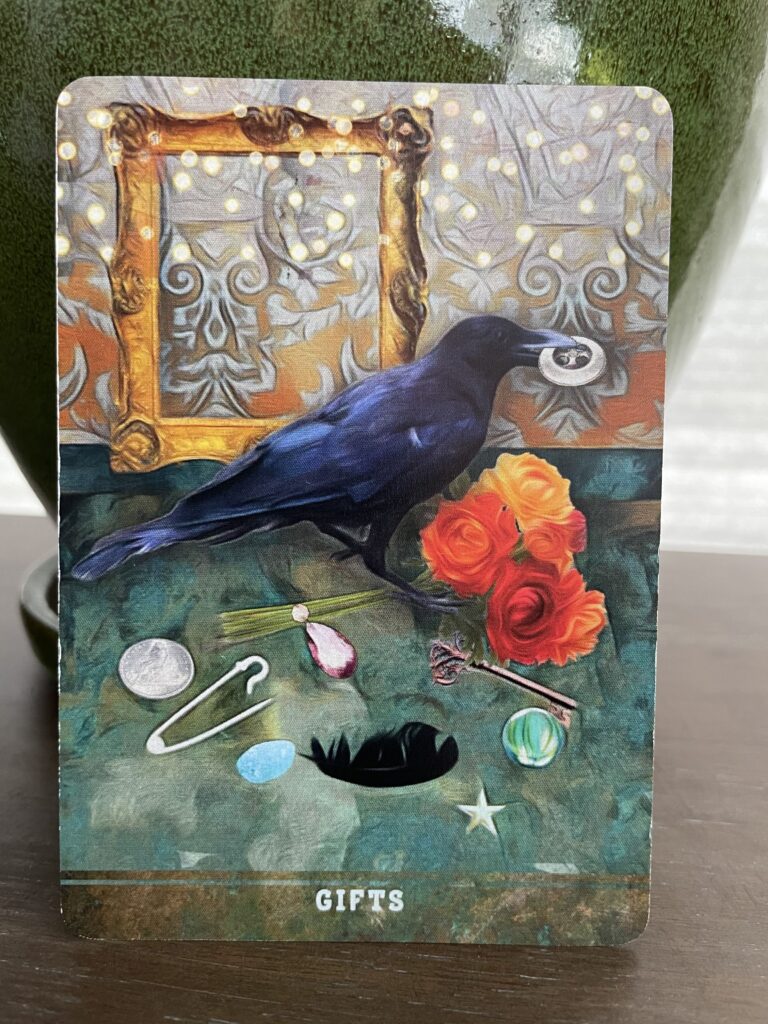
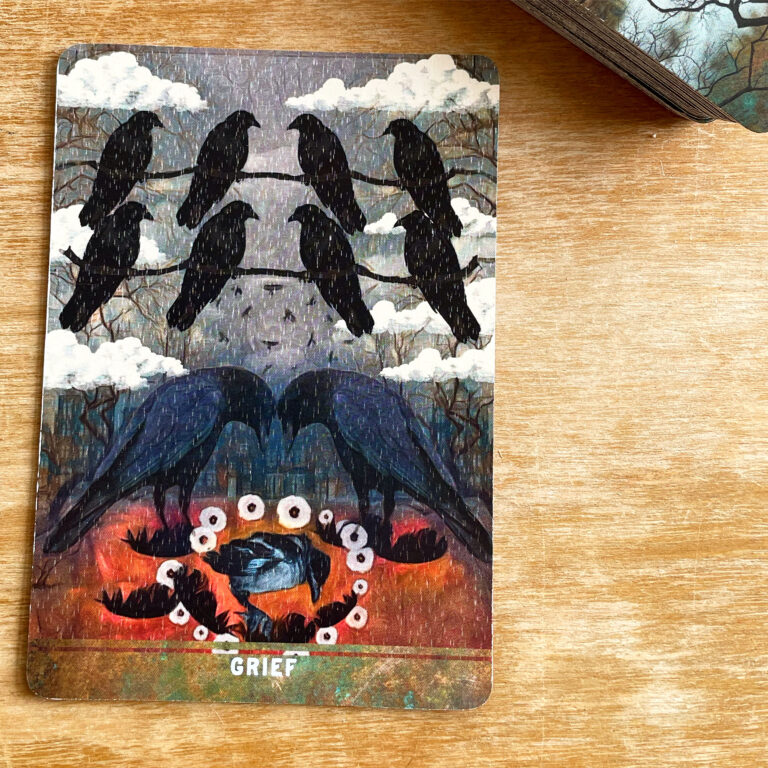
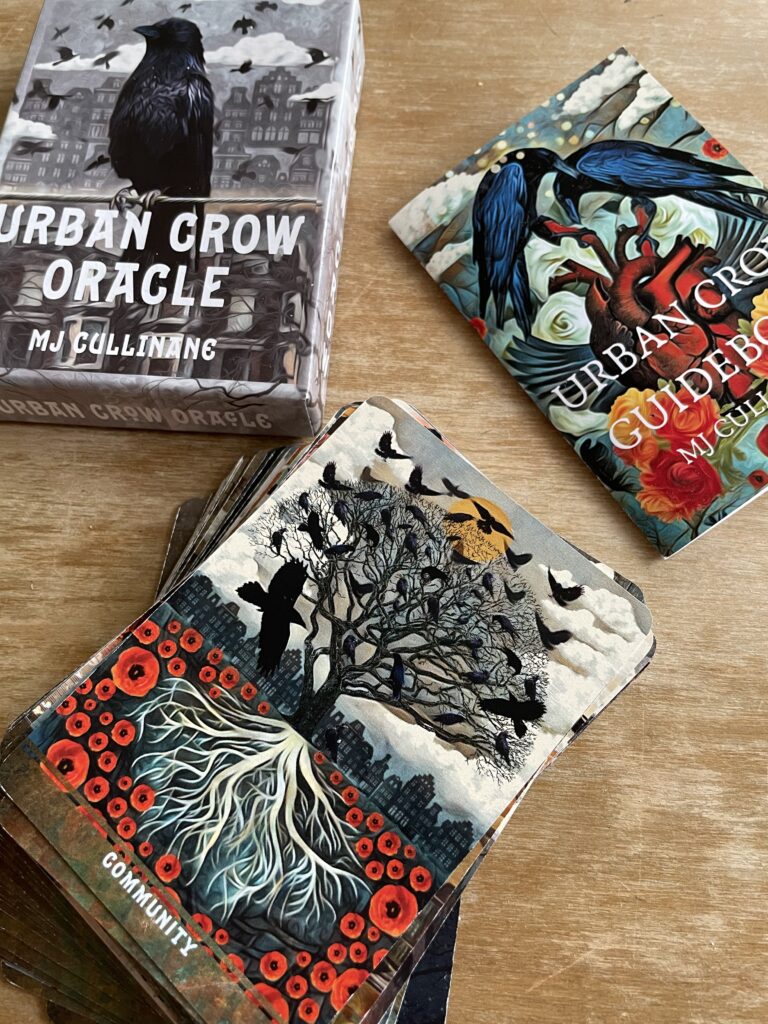
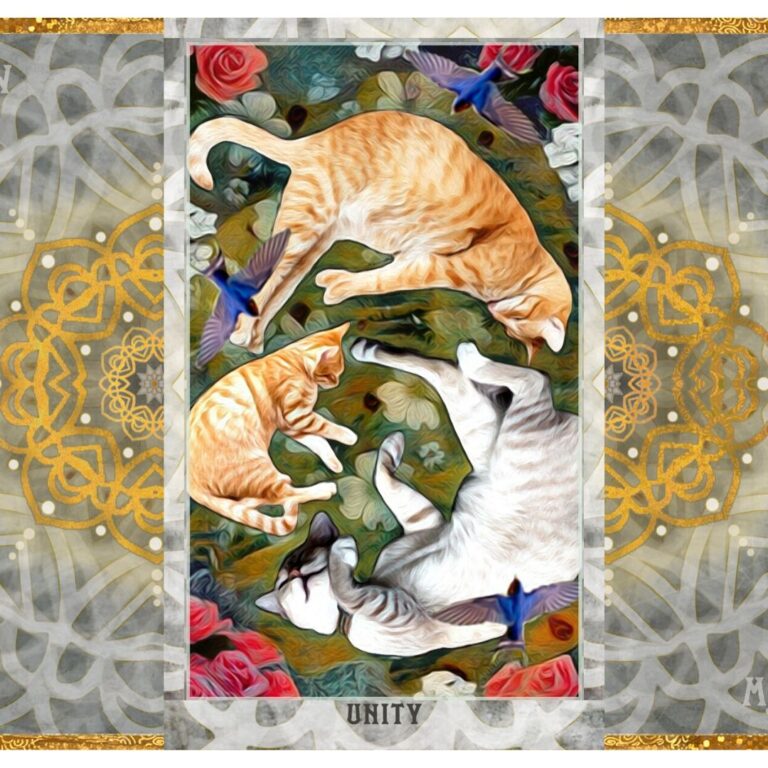
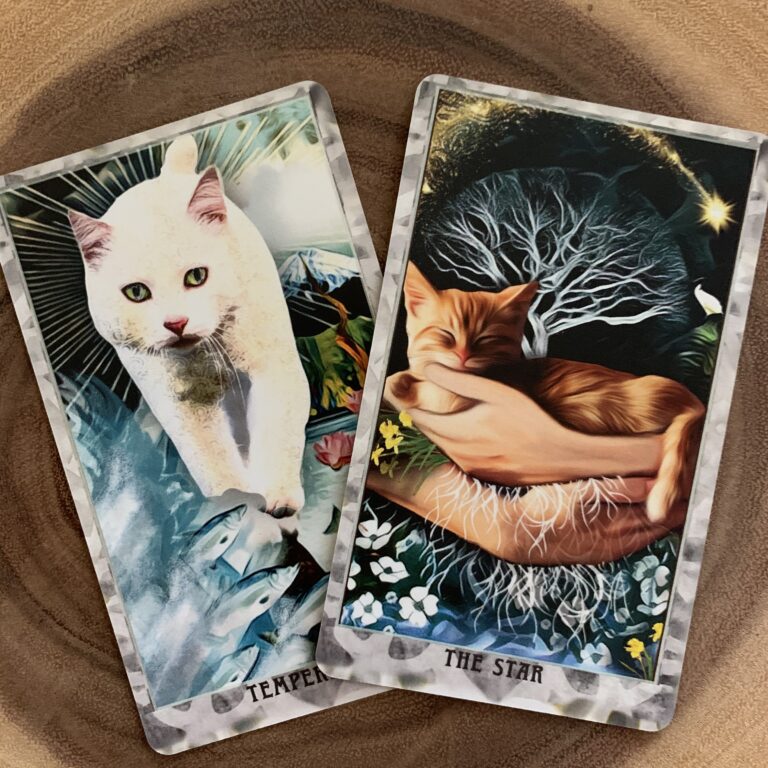
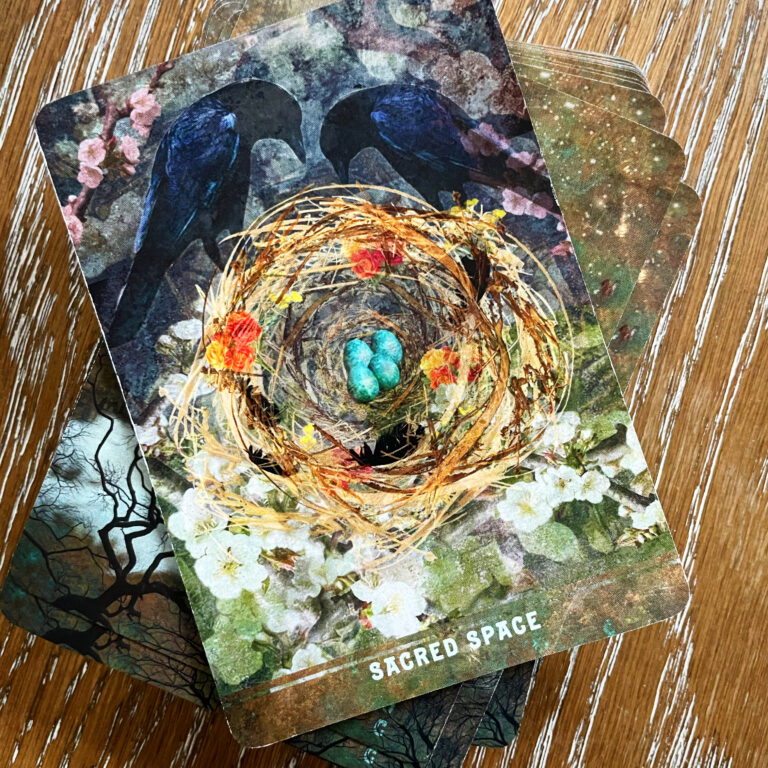
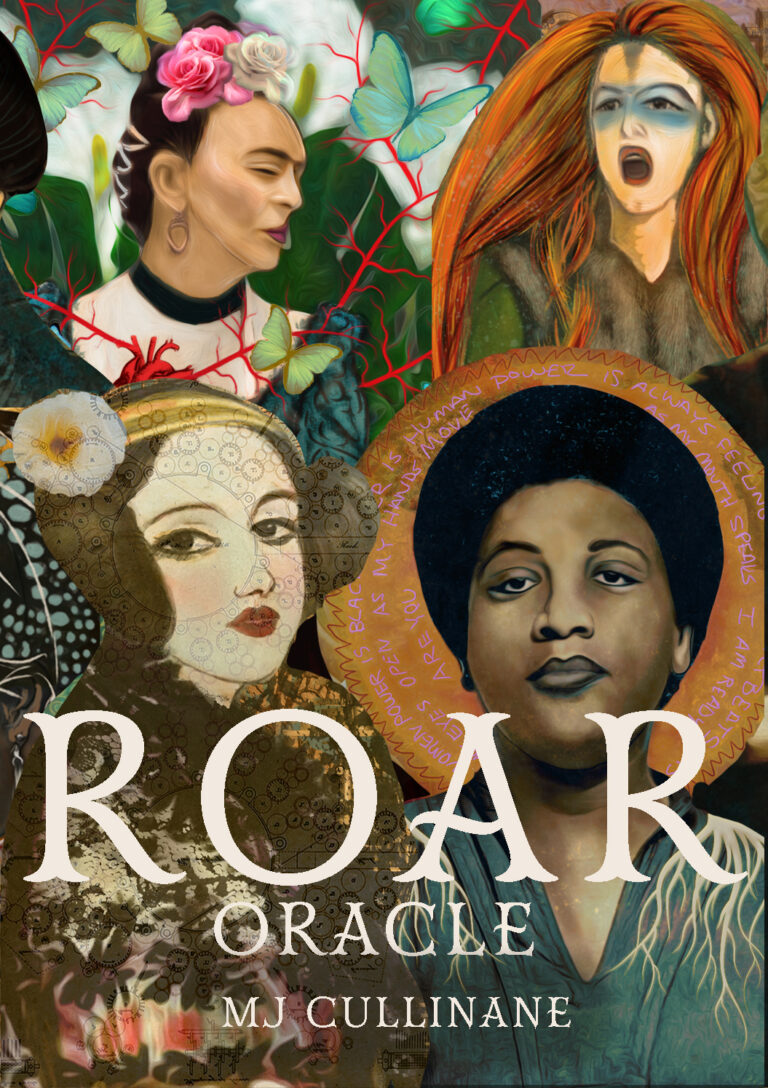
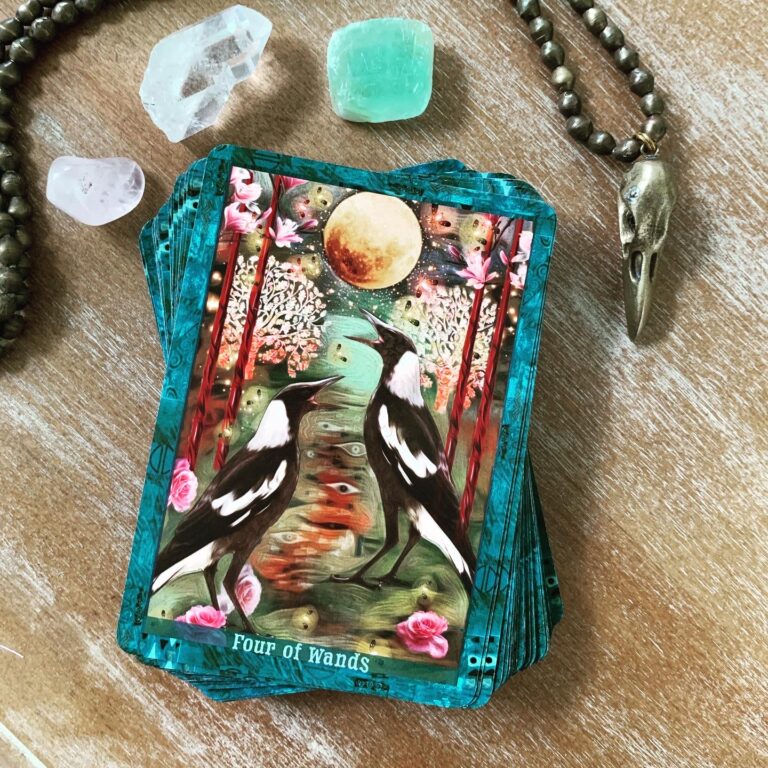
The name of Margaux’s website is mjcullinane.com.
Her tarot card and oracle decks can be found on the Home page of her website. You can also shop for them at crowtarotshop.com.
Margaux is on Instagram @crowtarotmjcullinane
And on Facebook at Crow Tarot/MJ Cullinane.
Margaux also has a Youtube channel where you can see her cards and learn more about them.
Here are some great takeaways from our conversation:
- Margaux has done ad on Facebook and Instagram to promote her tarot decks, and it’s been very successful for her. If you have something specific you are selling or launching, like her decks or even a new online class, you may want to utilize social media ads so more people can see what you make.
- Early in Margaux’s art career, she designed windows for a fashionable department store. That taught her to work very quickly because they had tight deadlines when putting up a new display. She learned that she can’t spend hours trying to fix something, she just needs to make a change and then move on. This has enabled her to make her decks very quickly.
- Listen to what your mind is telling you. Margaux tells a story about how she was so worried about finding something that did better financially for her than selling jewelry, so she sent a bolt of energy out to the universe. She went to her space where she likes to think about things, and that’s when it came to her to make a crow tarot deck. Don’t deny yourself when something comes to you like that, even if it sounds like a crazy idea. Every idea will have some basis in your background and you just may have found the idea that is perfect for you.
- To create her first tarot deck, Margaux funded it by using the crowdsourcing platform Indiegogo. In Episode 201 two weeks ago I talked with lettering artist Doris Wai who funded a gallery show by using Kickstarter. There are many crowdsourcing platforms you can use. Look into their pros and cons and talk to others who have used them to find the one that is right for you and your creative project.
- If you are creating something that is based on something else, and you want to use the same name, then make sure you are staying true to the original. I’m thinking of this in terms of the tarot decks that Margaux makes. If she wanted to make a 100-card deck, for example, she should not call it a tarot deck because tarot decks contain 78 cards. She also stays true to the different groups in the deck. Of course whatever we create, we can have artistic license. But we don’t want to mislead people by taking the name of something if what we are creating is vastly different. As Margaux says when you’re making a tarot deck, there are restrictions in what needs to be included, but there is so much room for interpretation.
- I asked Margaux if the artwork or the story of a card comes first for her. She said that the story comes first. She thinks about what energy she wants to come from a card and then she thinks of the elements of the artwork that she can use to depict that. I feel like that is opposite of what many artists do: they think of the art first, and attach a story to it later. If that’s how it sometimes works for you, why not try to make art the opposite way? It may give you more insight into your art, and it may spark a new design or motif for you.
- Margaux talked about the color palette she uses for a project. For example, if she’s doing an oracle deck with 50 cards, they all might have the same color border or background, and similar colors with their elements. You can use this idea if you’re making an art series or collection. You want something to unify them so that the viewer will know they go together. Choosing a color palette throughout the project is a good way to unify many pieces.
- She told me about different ways she has published and sold her decks. For her first few decks, she licensed them over to a company and they do all the selling. Now she publishes them independently, and the sales come off her website, but that company does the order fulfilment. Think of all these things when you compare companies and decide just how much control you want over what you have created.

